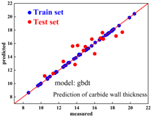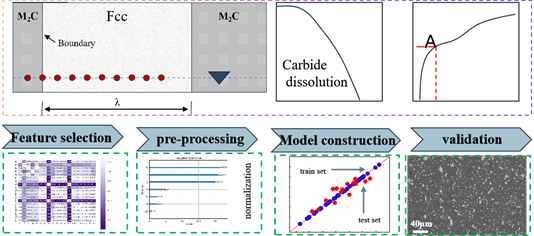
Numerical simulation of heating-forging-rolling-cooling control of high-speed steel
The red-hardness of high-speed steel benefits from the large amount of carbides, which play a key role in the various properties of high-speed steel. The grain size of the matrix and the type, morphology, size, and distribution of carbides in the high-speed steel during thermal processing have a significant impact on performance. The development of manufacturing industry has put forward higher requirements for tool materials. The manufacturers urgently need to optimize product quality and stability, which requires in-depth research on the tool steel processing process and precise regulation of microstructure such as carbide and matrix grain size at various stages.
The temperature, strain, stress and microstructure field are obtained by the whole process numerical simulation, and can be quantitatively refer to the influence of processing factors on mechanical properties. Combining with the theory of deformation-induced M2C transformation in this project, the regulation of carbide evolution is realized, and the heating, forging, and rolling processes of high-performance high-speed steel are also optimized.
The achievement can facilitates enterprises to develop HYM42MOD high-end steel roller, which brought in additional sales revenue of RMB12.8 million and profit of 2.2 million in 2022-2023, solving the critical problems of ultra-thin stainless steel rolling rollers and high-load silicon steel rollers.


Fig. 1 Temperature and speed cloud map in the annealing furnace


Fig.2 Temperature-stress-strain field of forging process, and model verification

Fig.3 Optimization of spheroidizing annealing process

